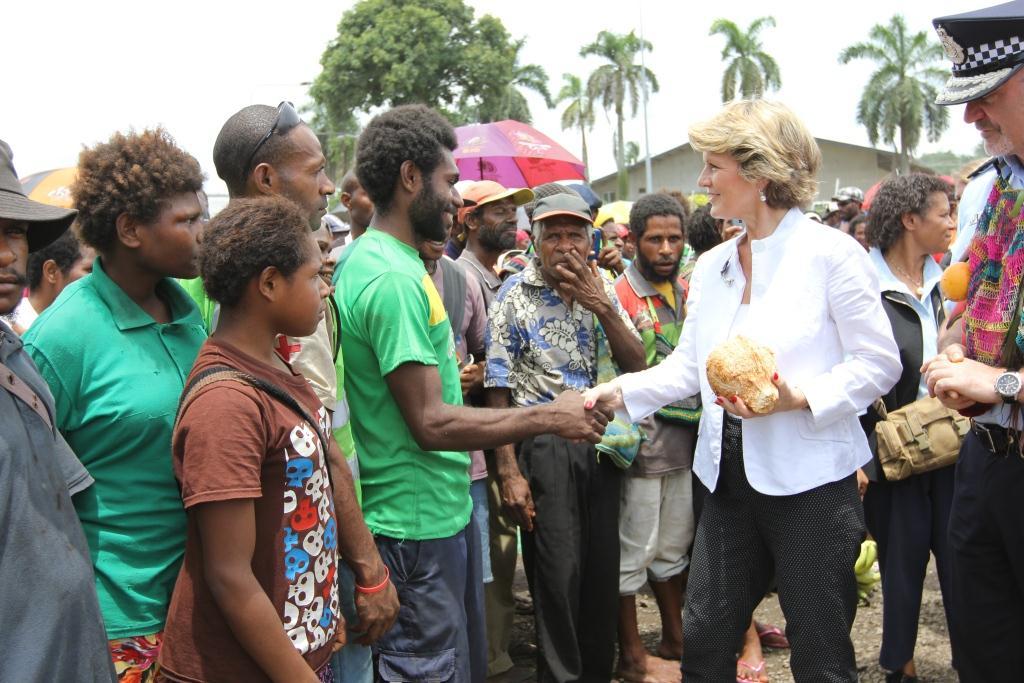Is DFAT doing more strategy than we think?
Posted By Robert Ayson on May 8, 2014 @ 14:30
In asking why Australia’s Department of Foreign Affairs and Trade doesn’t do strategy, Peter Jennings has posed [2] an important question. But the question begs at least two assumptions. The first is that the government agency responsible for Australian diplomacy isn’t in fact already doing strategy. The second is that we know what it looks like when strategy is being done. Those two assumptions are related—and problematic.
To know why this is the case it’s necessary to get to the heart of the ASPI Executive Director’s logic for the significant question he’s posing. He tells us that DFAT isn’t doing strategy because it lacks the interest and capacity for ‘strategic planning’. It doesn’t see ‘long-term planning as routine business’, and it’s ‘disinclined to commit big planning frameworks to paper’. You can see the common theme here. Strategy is synonymous with planning, especially the long-term, big-picture, formally-documented variety.
This planning view of strategy is then contrasted by Jennings with the non-strategic work he sees diplomats doing. Strategy isn’t ‘the intelligent management of events’ which ‘produces good crisis managers, but poor long-term planners’. Strategy is more likely to be found in Departments of Defence whose managers are confronted with ‘long-term investment decisions’ (i.e. in relation to big military capabilities) rather than with the ‘short term contracting arrangements’ that running an aid program requires.
It’s true that many people and organisations view strategy in this way. But almost all the worthwhile literature on strategy that I’m aware of makes the point that strategy and planning aren’t nearly as synonymous as Jennings suggests. For example, under the provocative sub-heading ‘Why a Strategy is Not a Plan [3]’, The Economist recently offered a review of by far the most magisterial of those writings: Lawrence Freedman’s Strategy: A History [4]. On page 611 of that major work, Freedman concludes that:
what turns something that is not quite strategy into strategy is a sense of actual or imminent instability, a changing context that induces a sense of conflict. Strategy therefore starts with an existing state of affairs and only gains meaning by an awareness of how, for better or worse, it could be different. This view is quite different from those that assume strategy must be about reaching some prior objective. It may well be concerned with coping with some dire crisis or preventing further deterioration in an already stressful situation. So the first requirement must be one of survival. This is why as a practical matter strategy is best understood modestly, as moving to the “next stage” rather than to a definitive and permanent conclusion.
That means there’s probably a good deal more strategy going on in DFAT than we might first think. It’s an organisation that has to deal with Australia’s overseas partners and its potential competitors, and that’s precisely where issues of conflict often present themselves. Rather than being found in the lofty words of a Foreign Policy White Paper, strategy may be present in a richer sense in the small unseen adjustment to one of Australia’s external relationships. Jennings himself offers some support for that idea with his comment that ‘the business of diplomacy must involve quick reactions to events that evolve outside of Australia’s control’. But that’s not, as he suggests, a reason why strategy isn’t being done. It’s probably a sign that it is.
Strategy therefore becomes more of a state of mind than a formal process. Its necessary resources are intellectual more than material. Good strategy can be done with what appear to be slim resources. As F.L.W Wood’s wonderful study [5] shows, a great deal of valuable diplomatic strategy was done by New Zealand’s government during the Second World War with the help of one major adviser (C.A. Berendsen), a tiny Department of External Affairs (established in 1943) and just a couple of overseas posts. A larger DFAT and a bigger overseas network won’t necessarily result in better strategy.
Does that mean nothing should change? Of course not. Like their counterparts around the world, Australia’s diplomats spend too much of their days on events management and logistics. It’s not good for strategic thinking when the only diplomatic conflict being worried about is the one in the diary of the next visiting delegation. But long-term planning isn’t the recipe for strategy in the diplomatic arena (or any other). What’s needed is something far less tangible but much more critical: the encouragement of a specific intellectual climate. That’s one where both short and long-term events in Australia’s overseas relations are being consciously connected to a sharp appreciation of Australia’s interests, and where that appreciation is kept in mind as both big choices and the smallest of adjustments are being made.
Robert Ayson is professor of strategic studies at Victoria University of Wellington. Image courtesy of DFAT [6].
Article printed from The Strategist: https://aspistrategist.ru
URL to article: /is-dfat-doing-more-strategy-than-we-think/
URLs in this post:
[1] Image: https://aspistrategist.ru/wp-content/uploads/2014/05/Bishop-PNG.jpg
[2] Peter Jennings has posed: https://aspistrategist.ru/why-doesnt-dfat-do-strategy/
[3] Why a Strategy is Not a Plan: http://www.economist.com/news/books-and-arts/21588834-strategies-too-often-fail-because-more-expected-them-they-can-deliver-why
[4] Strategy: A History: http://global.oup.com/academic/product/strategy-9780199325153;jsessionid=3CDBFF6F992832E1ACDAC60D725AAEC3?cc=nz&lang=en&
[5] F.L.W Wood’s wonderful study: http://nzetc.victoria.ac.nz/tm/scholarly/tei-WH2Poli.html
[6] DFAT: http://foreignminister.gov.au/photos/Pages/DisplayAlbum.aspx?MinisterID=4&Album=Visit%20to%20Papua%20New%20Guinea%2C%20February%202014#6
Click here to print.
